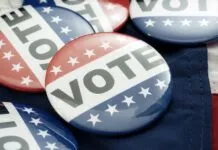Gov. Jeff Landry issued 138 executive orders during his first eight months in office, which represents the highest single-year tally of any governor dating back to at least 1975, when the current …
Already an INSIDER? Sign in.
We are glad you enjoy reading Business Report.
Continue reading this story and get ACCESS to all our content from any device with a subscription now.
- Get access to more than a decade of story archives.
- Get access to our searchable data center of TOP LISTS.
- Get exclusive content only available to INSIDERS.
 GET DAILY REPORT FREE
GET DAILY REPORT FREE








